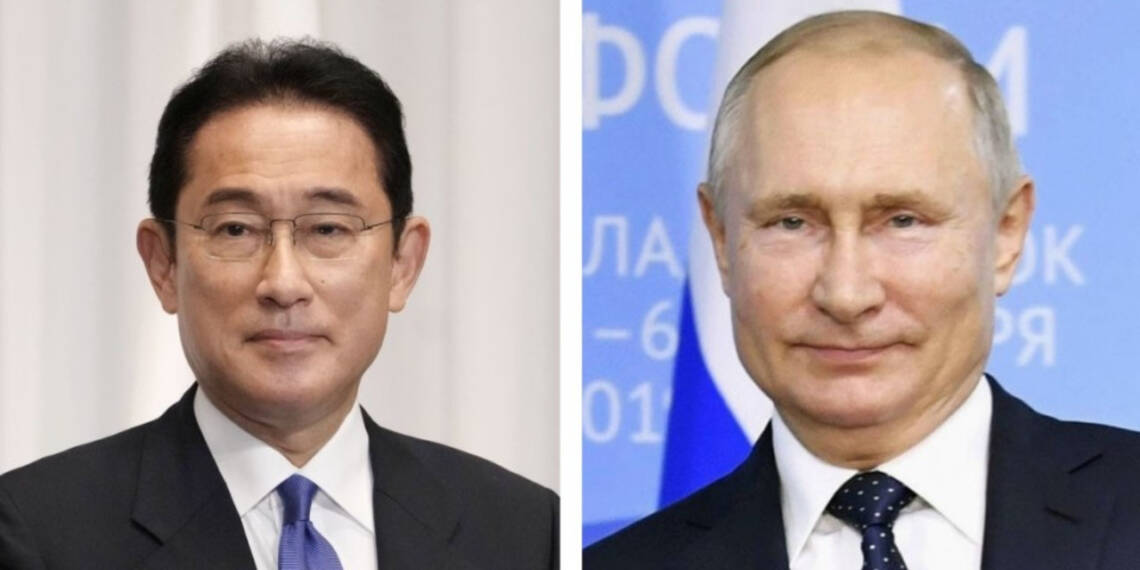In the treacherous waters of the Sea of Okhotsk, a tempest is brewing, and Japan finds itself at the epicenter of an impending storm. As the long-standing dispute between Russia and Japan over the Kuril Islands rages on, recent events have sent shockwaves through the region. The deployment of Russia’s formidable nuclear-powered ballistic missile submarine near the Kamchatka Peninsula has set the stage for a potential cataclysm. With tensions escalating between the United States and Russia, Japan stands as the biggest casualty in this high-stakes geopolitical showdown.
History of Disputed Kuril Islands:
For decades, the disputed Kuril Islands have been a thorn in the side of Russo-Japanese relations. Both nations assert their rightful claim to these strategic isles, creating a powder keg situation. Past confrontations have pushed the adversaries perilously close to the brink of war, showcasing the fragility of their uneasy coexistence.
Japan’s Stance in the Russia-Ukraine Conflict:
Against the backdrop of the Russia-Ukraine conflict, Japan, under the leadership of Fumio Kishida, took a stand against Moscow. In a historic move, Japan provided unwavering support to Ukraine, both financially and diplomatically.
In a measure to target Moscow, Japan also agreed to open a NATO liaison office, thus infuriating Russia.
Read More: Kishida is literally begging before Vladimir Putin for Russian gas, but it’s too late now
Moreover, Fumio Kishida, became the first Japanese Prime Minister to attend a NATO summit. He vehemently condemned Russia’s aggression and raised the baton for helping Ukraine. But in the process of helping Ukraine, he forgot to protect Japan.Russia’s Provocations in the Pacific:
As the world’s attention focused on the Russia-Ukraine conflict, Moscow stealthily bolstered its military presence in the vast far eastern regions bordering the Asia-Pacific. Accusing the United States of expanding its influence in the region, Russia raised security concerns not only for Japan but for the entire region.

Like a lone voice in the wilderness, Russia had repeatedly cautioned Japan and the United States about the escalating provocations in the region. But their heedless disregard for these admonitions left Russia no choice but to unleash its hidden arsenal.
So, the news is that Russia has placed its latest nuclear-powered ballistic missile submarine in close proximity to the Kamchatka Peninsula. The Generalissimo Suvorov, which entered service at the end of 2022, carries up to 16 nuclear-tipped Russian Bulava missiles, each of which can carry more than one nuclear warhead.
“The submarine Generalissimo Suvorov will make an inter-naval transition from the Northern Fleet (in the Arctic) to the Pacific Fleet in August,” the state TASS news agency reported, citing a source close to the military department. “The transition will be carried out along the Northern Sea Route, including in a submerged position.”
The Generalissimo Suvorov is meant to bolster the Russian Pacific Fleet’s force of nuclear-powered submarines at the Rybachiy submarine base on the Kamchatka Peninsula, Russian agencies reported earlier.
This action of Russia has sent shockwaves throughout Japan, sparking fears of a potential confrontation.
Japan’s Vulnerability:
With the United States a distant player in the region, Japan finds itself uncomfortably entangled in the escalating rivalry between Washington and Moscow. As the only country within striking distance of Russia’s provocations, Japan is on the front lines, bearing the brunt of this high-stakes game. The Kamchatka Peninsula, a mere stone’s throw away from the Sea of Okhotsk and the disputed Kuril Islands, further compounds Japan’s vulnerability.
Implications for Japan:
Japan’s unwarranted involvement in the escalating tensions between the United States and Russia paints a gloomy picture for its future. As the storm gathers strength, Japan risks being tossed about in the turbulent sea of geopolitical maneuvering. Its very stability, security, and economic prosperity hang in the balance. The repercussions of a full-blown conflict would be devastating for Japan, potentially plunging the nation into chaos.
https://www.youtube.com/watch?v=FM_FS6MK2dg








